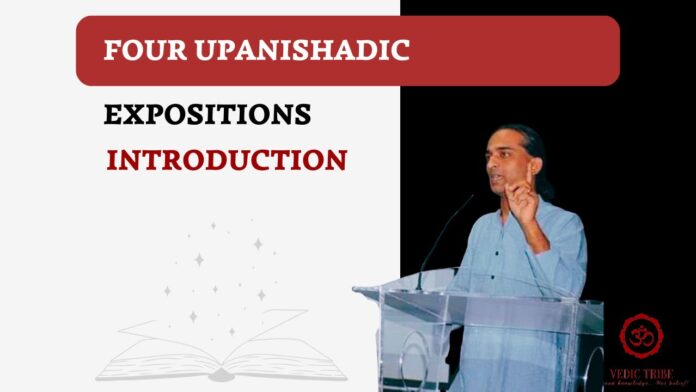The Enigmatic Language of the Upanishads
The Vedas and Upanishads, ancient Indian scriptures, are renowned for their wisdom and intricate symbolism. Their language, often poetic and metaphorical, can be challenging for modern readers to fully grasp.
Why the Complexity?
Ancient Wisdom, Modern Minds: The concepts and ideas contemplated in these texts were comprehended millennia ago. They were recorded in an ancient cultural and societal context vastly different from our own.
Symbolic Language: The sages who recorded their experiences, employed a symbolic language to convey reflective truths about the nature of the physical reality, the human & other sentient consciousness, and ultimately the supreme consciousness.
Multiple Interpretations: Many of the symbols and metaphors used in the Vedas and Upanishads are open to multiple interpretations, allowing for a rich and diverse understanding. But overtime, due to destruction of the educational system which were designed to discern these interpretations, the modern readers find it extremely challenging.
The Power of Symbolism
Symbolism is a powerful tool that can be used to convey complex ideas in a concise and evocative manner. By understanding the symbolic language of the Vedas and Upanishads, we can gain deeper insights into the nature of reality, sentient consciousness and the supreme consciousness.
A Simplified Approach
Fortunately, numerous philosophers and scholars have dedicated their lives to unravelling the mysteries of these ancient texts. D.V. Gundappa, a prominent Indian writer and thinker, is one such scholar who has offered a simplified approach to understanding the symbolic language of the Upanishads. His work, provides a valuable framework for exploring these scriptures. In this series of articles – we have relied on analysis and guidance provided by him in his various works.
Upanishads:
The Upanishads, often referred to as the “Vedanta” play a crucial role in understanding the deeper philosophical and spiritual essence of the Vedas. While the Vedic language seems to cover varied areas like the realm of deities, rituals…etc, the Upanishads delve into the metaphysical and spiritual dimensions. Upanishads unravel the true meaning of Vedas often employing symbolic language and metaphors
The “Vedic Tribe” is happy to bring you four such symbolic expositions used in Upanishads:
1. Symbolic names of Brahman (the supreme consciousness)
2. Symbolic forms of spiritual concepts (like “yajna”)
3. Symbolic action for connecting with Brahman (like meditation)
4. Symbolic stories for eternal values (like Satyakama Jabala’s story for truthfulness)
In the next article, we will discuss the first exposition – “symbolic names of Brahman”.
Our intention is to create enough curiosity in you to enable you to study Upanishads and progress in your spiritual journey.
All the best.
Madhwesh K
Vedic Tribe

